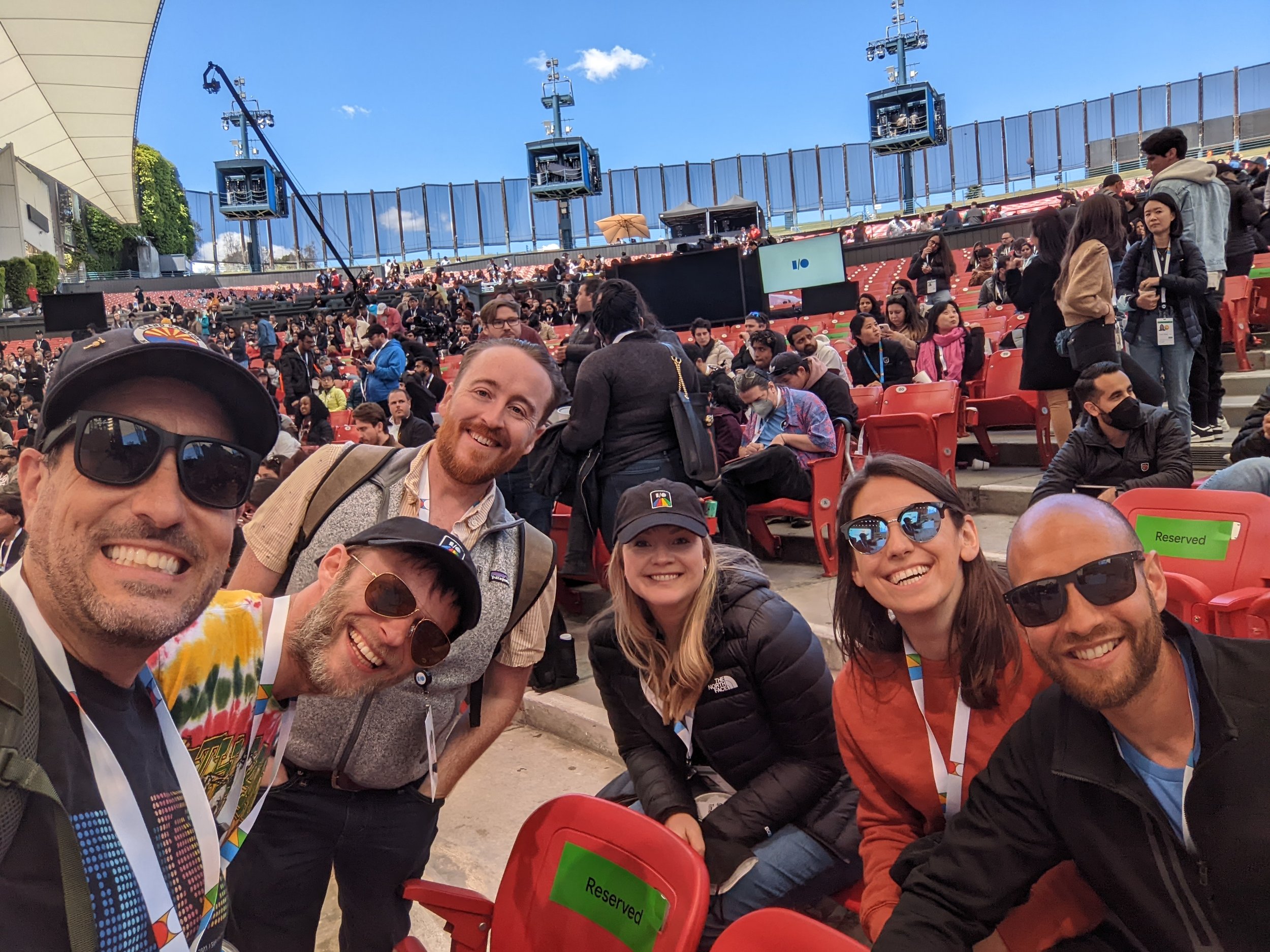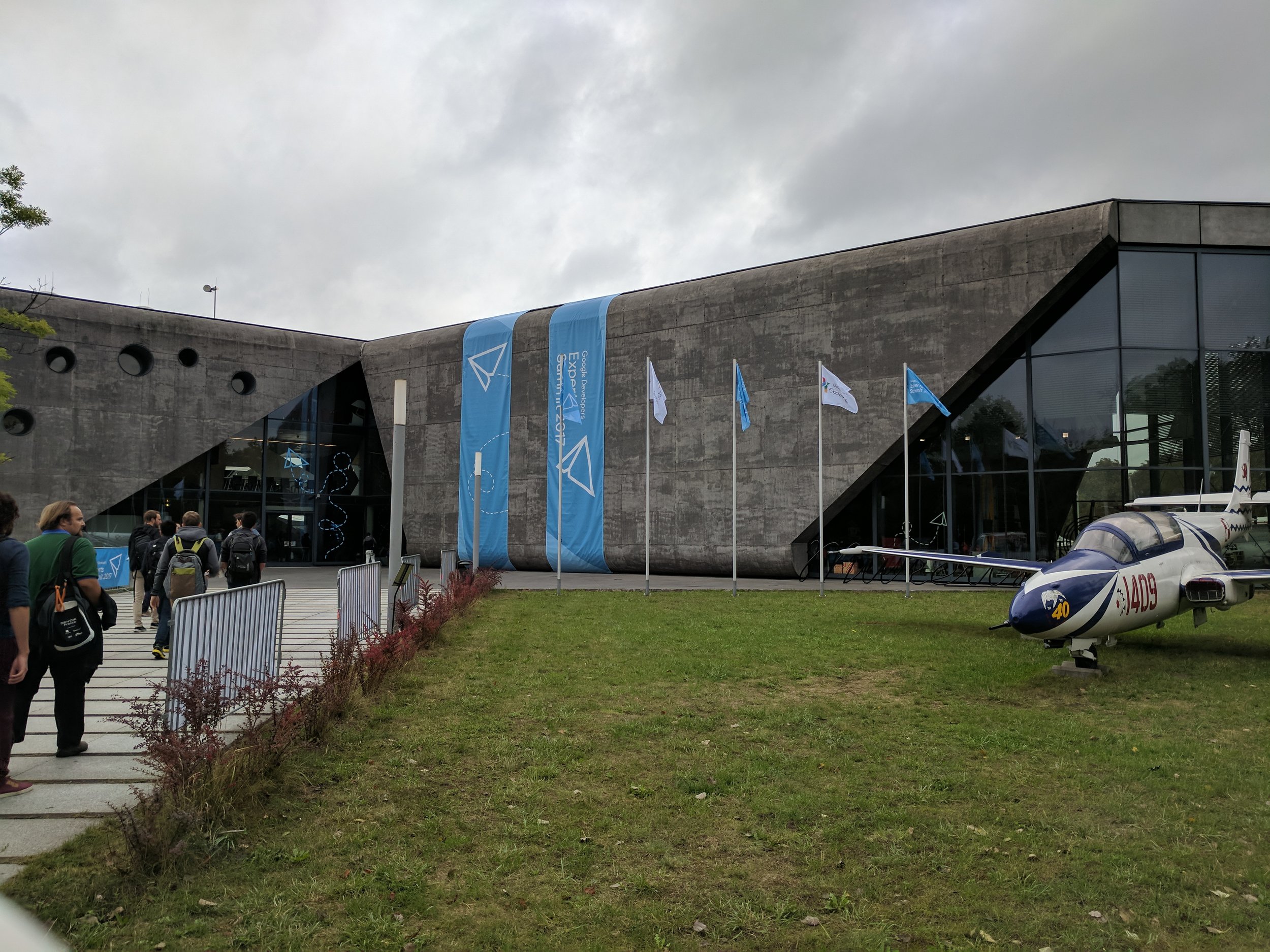10 Years of Advocacy as a Google Developer Expert
/I was just renewed for my 10th year as a Google Developer Expert (GDE) for Android, and I want to reflect on my experience in the program. Being a GDE is incredibly impactful to my life and I am super grateful to be involved.
Excited for my 10th year in the gde program
During my decade in the program, the landscape of Android development has changed dramatically. From the early days of fragmentation to the rise of Kotlin and Jetpack, each new chapter brought new challenges and opportunities for advocacy. From the start, I knew that being a GDE wasn’t just about staying up to date on the latest technologies; it was about building bridges, fostering communities, championing the voices of developers and inspiring others to grow their own skills and careers.
ME IN THE BLUE HOODIE WITH A LOT OF VERY YOUNG ANDROID GDE’S IN 2014
Helping the Developer Community Thrive
As a successful GDE, I set out to break down complex concepts into something that is accessible to everyone. Over that time, my inspiration led me to write blog posts/tutorials, create videos, speak at conferences and even write a book. I continue to embrace every opportunity to build bridges between the technical intricacies of technology and the minds of the developer community.
The Android community is incredibly strong. I still actively participate in online forums, organize local developer groups, and mentor aspiring developers. I continue to collaborate directly with the engineering and product teams at Google, and use these opportunities to champion the voice of the common developer.
Seeing the community grow, learn from each other, and build amazing things together has truly been the most rewarding aspect of my GDE journey.
Speaking
SPEAKING at GDE Worldwide Summit (google conference center\sunnyvale, ca)
Google has never limited my topics for presentations or questioned my content, allowing me full freedom to share what I know. I feel so fortunate that many organizers are interested in the subjects I propose, as I have been able to present on a variety of topics including:
Android Developer Tools
Android Architecture and Foundations
User Interface Design (Material, Animation, Design Systems, and much more)
Effective Remote Teamwork
Generative AI
Human Centered Machine Learning
Software Product Management
Mentoring
I have enjoyed mentoring students, corporate partners, and startup founders through my involvement with the the Google Developer Student Clubs, the Google Startup Accelerator, and tons of hackathons. This role is rewarding, because I really enjoy helping teams create products that are great for the user. I am particularly proud of the multi-part workshop I co-created with Bryce Howitson (“The Care & Feeding of Digital Products”) that students all over the world learned from. It is wonderful to be able to create material on that kind of scale.
Gratitude to the GDE Program
While I have a ton of reasons to be thankful to the GDE program, I’m most thankful for the deep friendships I’ve been able to make.
I have made many close friends in this program, and established relationships with people that will last a lifetime. The Android community is small and tight-knit. Feeling “at home” in that world has been really great for my social and professional network.
Android gdes 2016 - the group continues to grow
My closet is full of Google/GDE clothing and merchandise. I generally don’t wear a lot of logo gear, but I continue to be proud to wear these items. It is always nice when a box from Google shows up on my doorstep, and I am lucky and honored to be on their gift list.
Thank you video to the Google Developer Experts program for all the lovely gifts through 10 years in the program.
Over the past decade, Google has very generously supplied resources (💰🎤 🍕) to help us organize events. They sponsored Phoenix Kotlin Everywhere and each of IoTDevFest events we planned, which likely would not have been successful without their support.
The GDE travel program ✈︎ has enabled me to speak at events all over the world. Knowing that this investment is available to support my ability to empower the developer community has always filled me with gratitude. It’s an experience that I hope more GDEs are able to benefit from, and I’ve always made sure to use these financial resources wisely so that it can continue to be available for future generations of GDEs.
How to Become a GDE
For anyone wondering how to get into the GDE program, the answer is simple, help the community in whatever way inspires you.
I was doing all the things to help the community before I was a GDE, and eventually I was recognized for my efforts.
Personal Highlights
This post wouldn’t be complete if I didn’t mention some personal highlights.
My ability to access conferences always been wonderful. I was fortunate to speak at and attend almost every Google IO throughout the years. I was invited to many other developer conferences, including a memorable GDE summit in Krakow Poland. I enjoyed being part of the keynotes, meeting experts, chatting about tech, attending presentations, and enjoying after hours events (🎹 🥁 🎷 ).
At IO15, Google Developers setup a book signing for authors in the program. All of the books we gave away were purchased by the Google Developers program. When we ran out of books (the line became way longer than any of us expected!), they took the names of everyone still waiting and sent them copies of the book after the conference (😍 🙏).
Book signing at google IO15
Conclusion
As I look back on these 10 years, I’m filled with gratitude for the incredible experiences and the amazing people I’ve met along the way. The journey of a GDE is one of continuous learning, growth, and connection. It’s been about giving back to the community that has given me so much.
Looking ahead, I’m excited to see what the next chapter holds for Android development and the role of GDE’s in shaping its future. I anticipate big impacts from Generative AI on the mobile form factor, and I will closely watch how Google is shifts their focus to this emerging technology.
I would love to thank every individual that has impacted my time as a GDE, but that list is too long (and would never be complete). I could not have done this without the community, and I sincerely thank everyone who empowers people to share content.
Special thanks to Lori Wolfson and Mala Janus for their feedback helping me create this post (they were way better than ChatGPT).
1ST WORLDWIDE GDE SUMMIT IN MOUNTAIN VIEW, CA — 2014






















